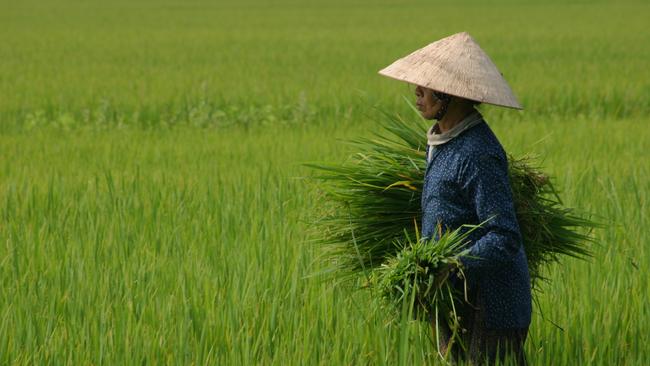It’s time for the planet’s second Green Revolution

Most of the increase in production came from farmers growing more food from each hectare of land. The extraordinary progress is due to the Green Revolution that turbocharged modern inputs for farming.
It has been estimated that Nobel Peace Prize winning agronomist Norman Borlaug, who spearheaded the intensification of modern farming methods, saved more than one billion people from hunger. As well as feeding people, the Green Revolution made societies much richer.
And, as agriculture becomes more efficient, people are freed from backbreaking labour and able to engage in a much broader range of productive activities.
The Green Revolution was an extraordinary achievement. However, the world needs a second Green Revolution to extend the benefits to the world’s poorest and reduce global hunger.
It is especially needed today as we fall behind on feeding the planet. Since 2016, world leaders have made grand development promises for every country by 2030, called the Sustainable Development Goals. One of the most crucial goals focuses on ways to boost agriculture – from ending hunger to ensuring better nutrition and more sustainable farming.
Unfortunately, we are failing our pledges, and not just because Covid derailed progress. A tracker shows that even based on progress before the pandemic’s disruption, politicians’ food promises will not be met by 2030 but more than 80 years later, in the early 2100s.
Indeed, the entire world will be late on all its major commitments. In 2023, we are now at the halftime mark for our grand promises, but we’re nowhere near halfway.
That’s why my think tank, the Copenhagen Consensus, has been working with some of the world’s best economists to identify the most effective policies for the remaining time. If we can’t do everything, we should focus on the smartest solutions in every area – including agriculture and hunger.
Our researchers looked at many agricultural policies, like subsidising fertiliser and increasing irrigation. These all deliver moderate benefits to society, but per dollar invested, the effects are not amazing. However, there is one clear opportunity for humanity: a big increase in investment in agricultural research and development.
There is still significant underspending on agricultural R&D for poorer countries. Big corporations understandably spend most in rich countries where large-scale farmers have deep pockets. That is why in 2015, 80 per cent of global agricultural R&D funding went to rich and upper-middle income countries, while lower-middle income countries got only 20 per cent, and the world’s poorest countries got almost nothing.
This unequal investment has been persistent for more than half a century. It is a primary reason why the Green Revolution didn’t help the poorest as much as wealthier countries. Cereal yields in high-income countries almost tripled from 1961 to 2018, whereas low-income countries saw a much smaller increase of 50 per cent.
The untapped potential is huge. Research published this week by Copenhagen Consensus demonstrates that the world will only need to spend a small amount more each year to generate vast benefits. It estimates the additional cost of R&D this decade is about $US5.5bn ($8bn) annually – a relatively small sum, less even than Americans spend on ice cream every year.
This investment will generate better seeds and high-yield crops that can also better handle weather changes like those we will see from climate change. Creating bigger and more resilient harvests will benefit farmers, and producing more food will help consumers with lower prices.
The total net benefit over the next 35 years for both farmers and consumers adds up to more than $US2 trillion. Every dollar spent delivers an astounding $US33 of social benefits, making this a spectacular investment.
By 2050, this additional funding will boost agricultural output by 10 per cent, reduce food prices by 16 per cent, and increase per capita incomes by 4 per cent.
The investment will increase GDP in developing countries by $US2.2 trillion by 2030 and $US11.9 trillion by 2050, a 2 per cent and 6 per cent increase in per capita incomes respectively. And more efficient agriculture will reduce global climate emissions by more than 1 per cent.
Agricultural R&D is a phenomenal investment because not only do we make agrarian workers more productive, but we enable more people to be productive and innovative in other sectors, too. It leads to fewer people being hungry, and to lower costs of food for everyone.
We can’t deliver on all our promises for 2030. But we should deliver on agricultural R&D for the poorest half of the planet, because it’s one of the best investments humanity can make.
Bjorn Lomborg is president of the Copenhagen Consensus and visiting fellow at Stanford University’s Hoover Institution.





One of humanity’s biggest achievements in the last century was making a huge increase in food production. From 1900 to 2000, there was a sixfold increase in crop harvests while the global population increased less than fourfold, meaning that on average people today have around 50 per cent more food available than their great-great-grandparents.